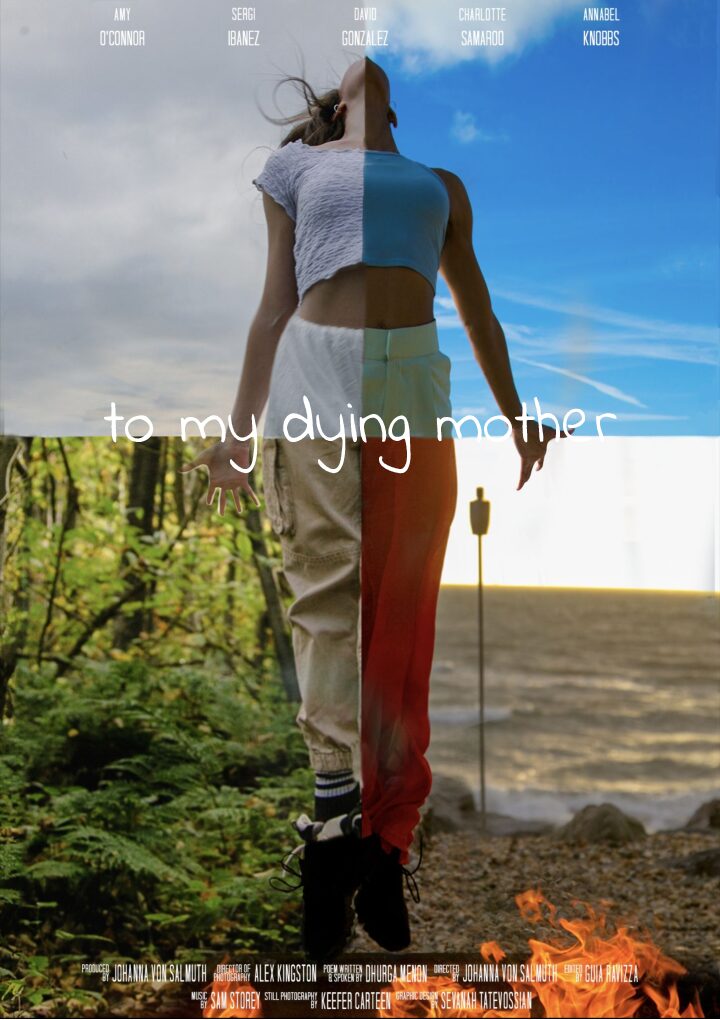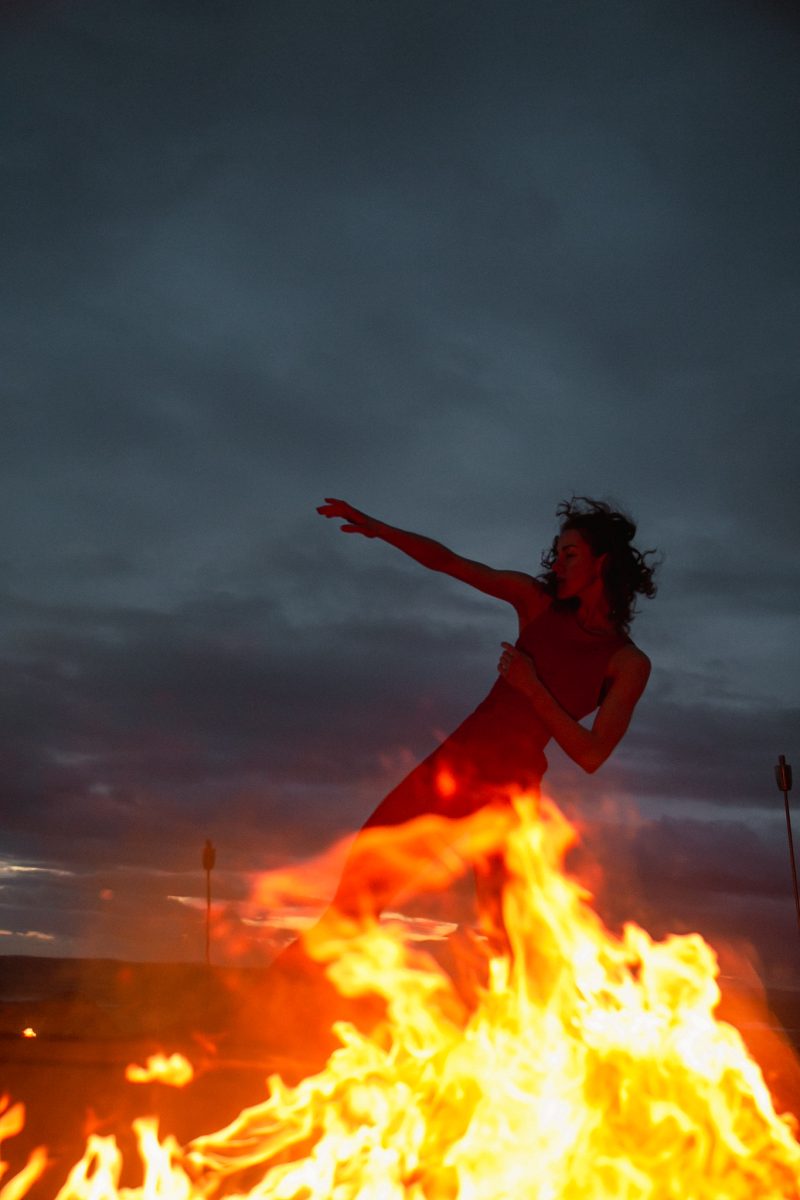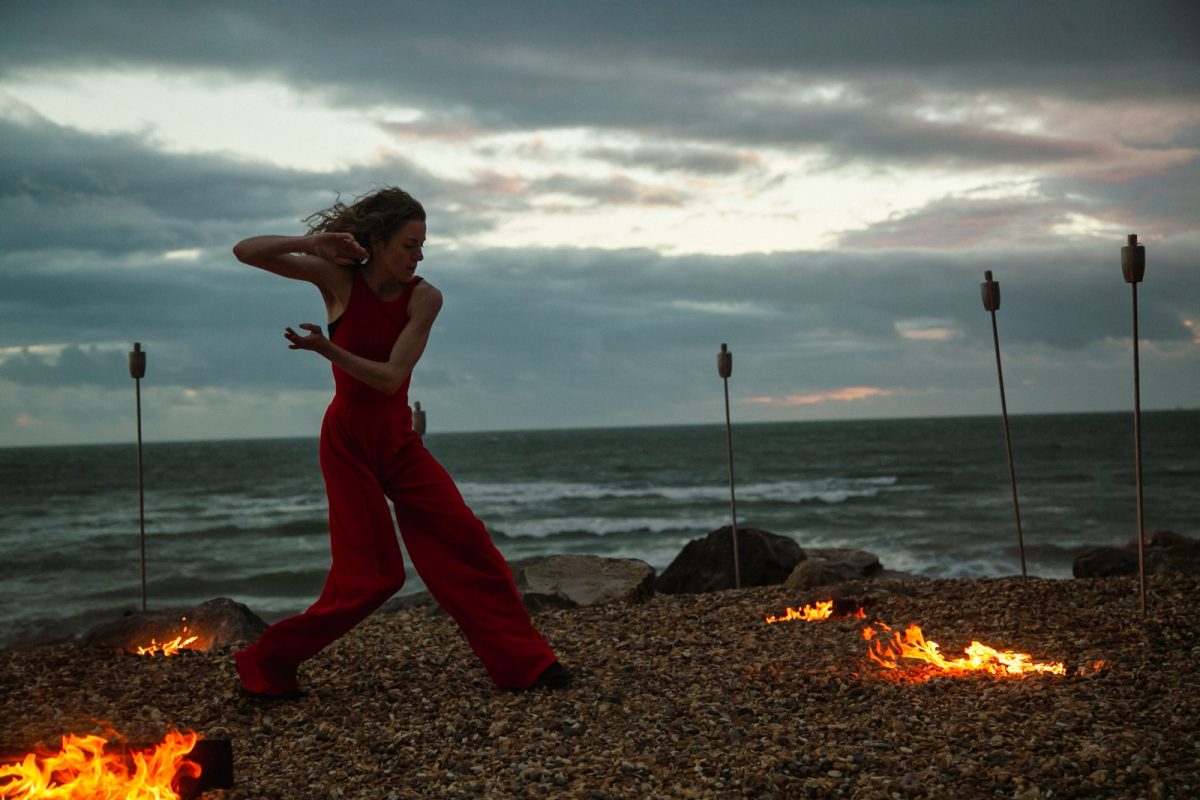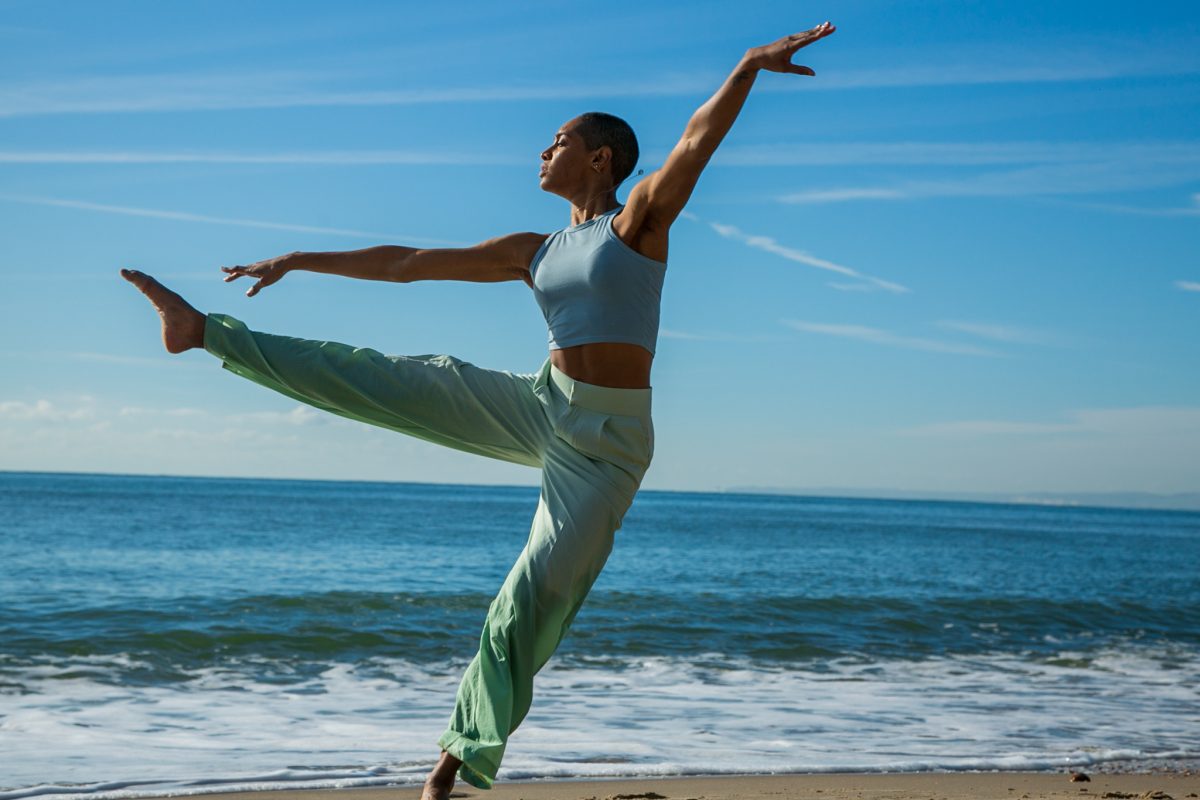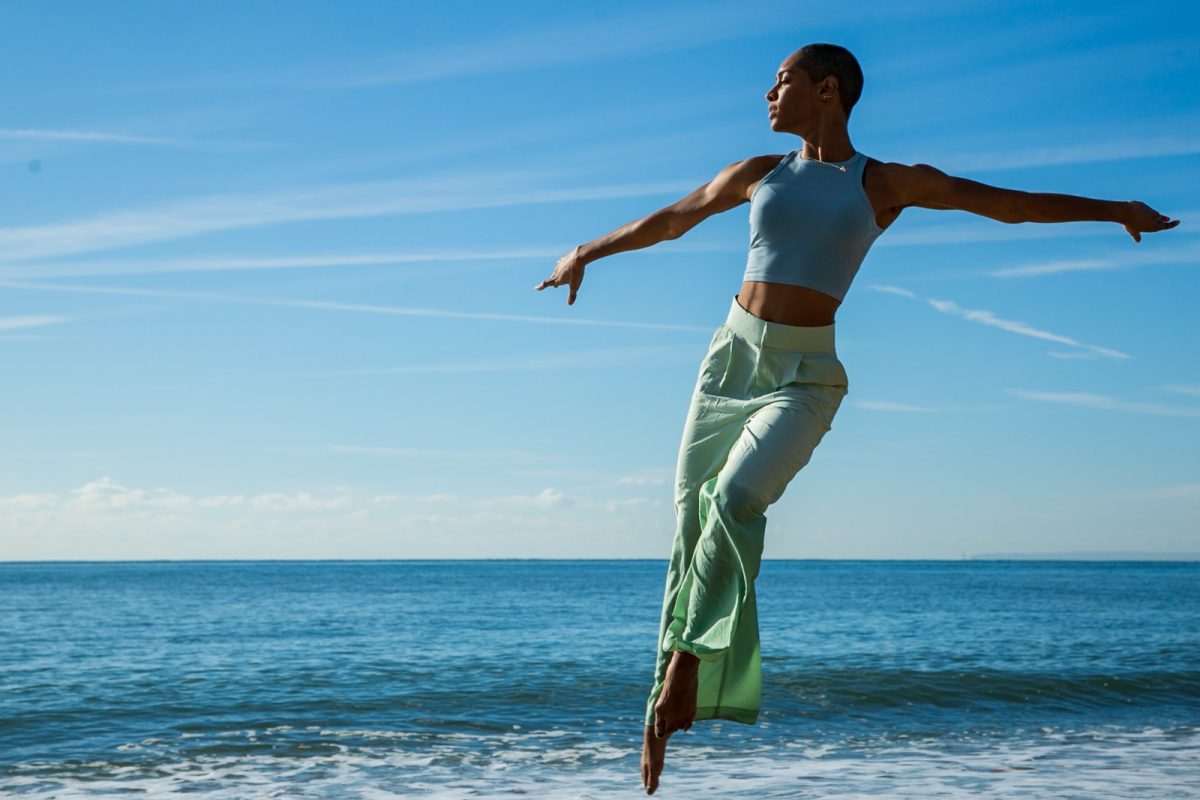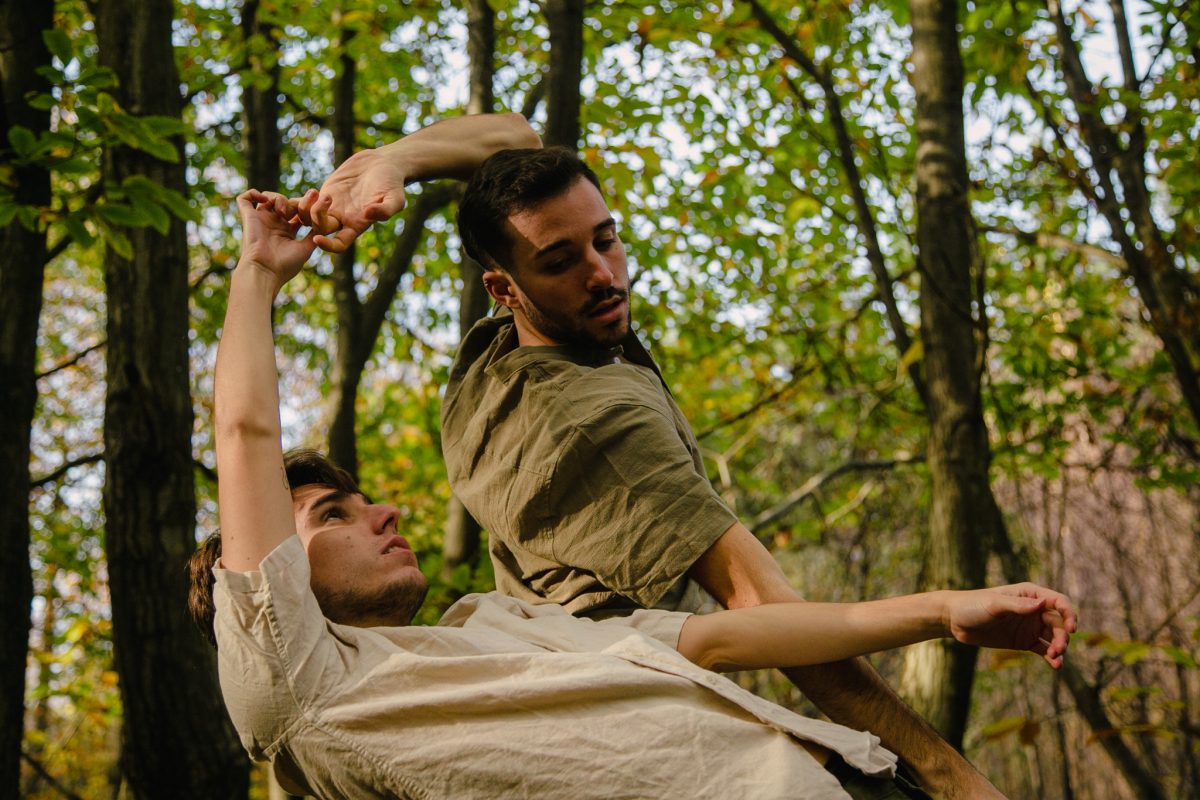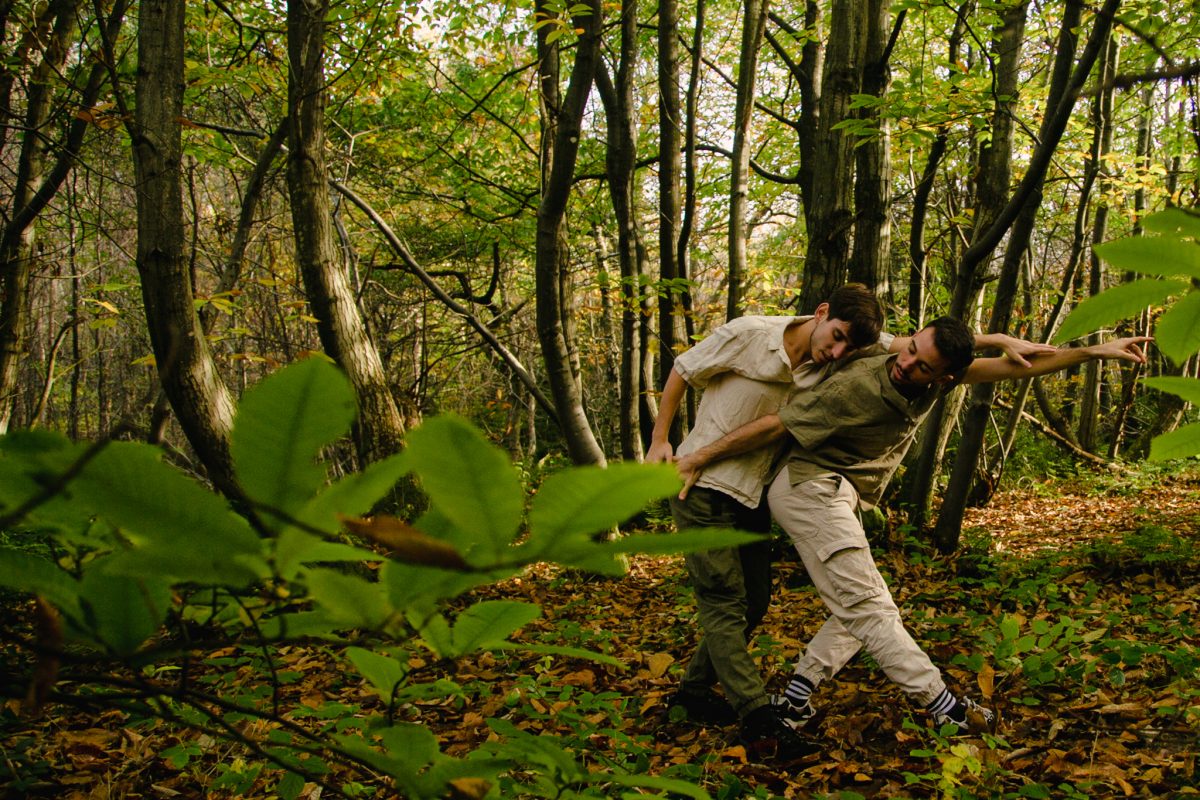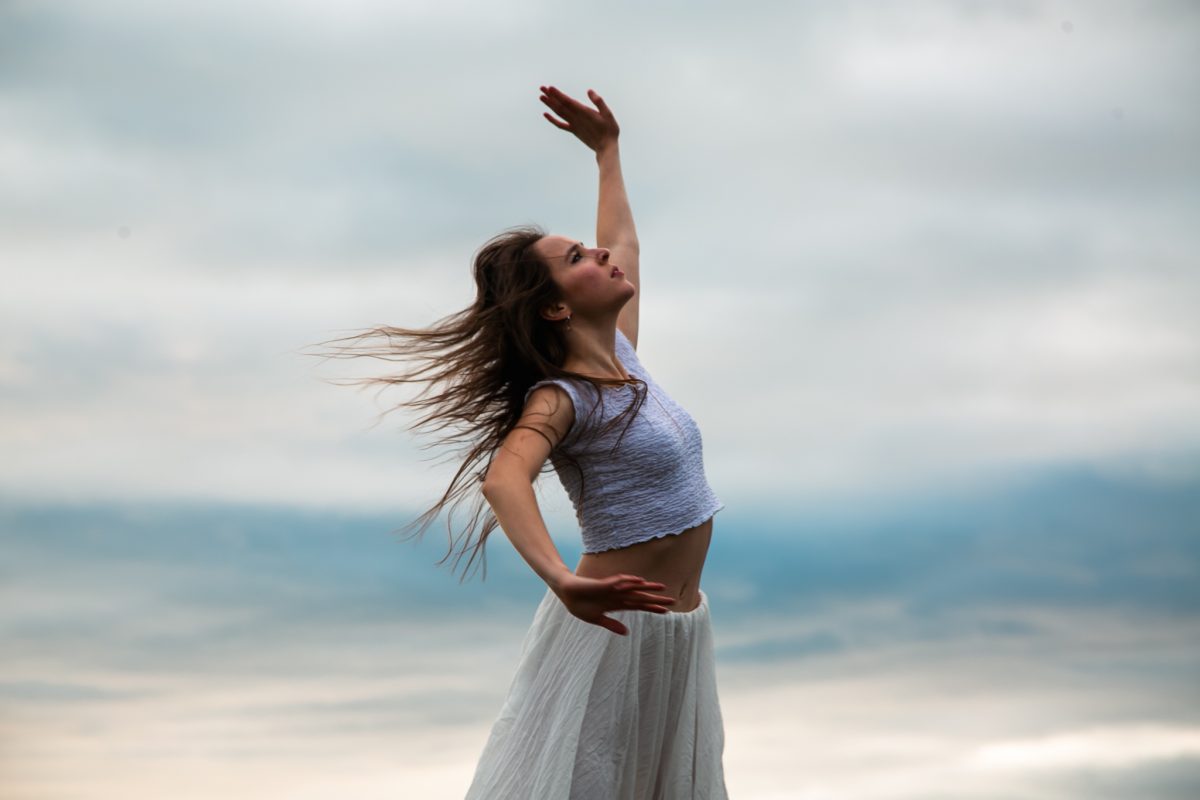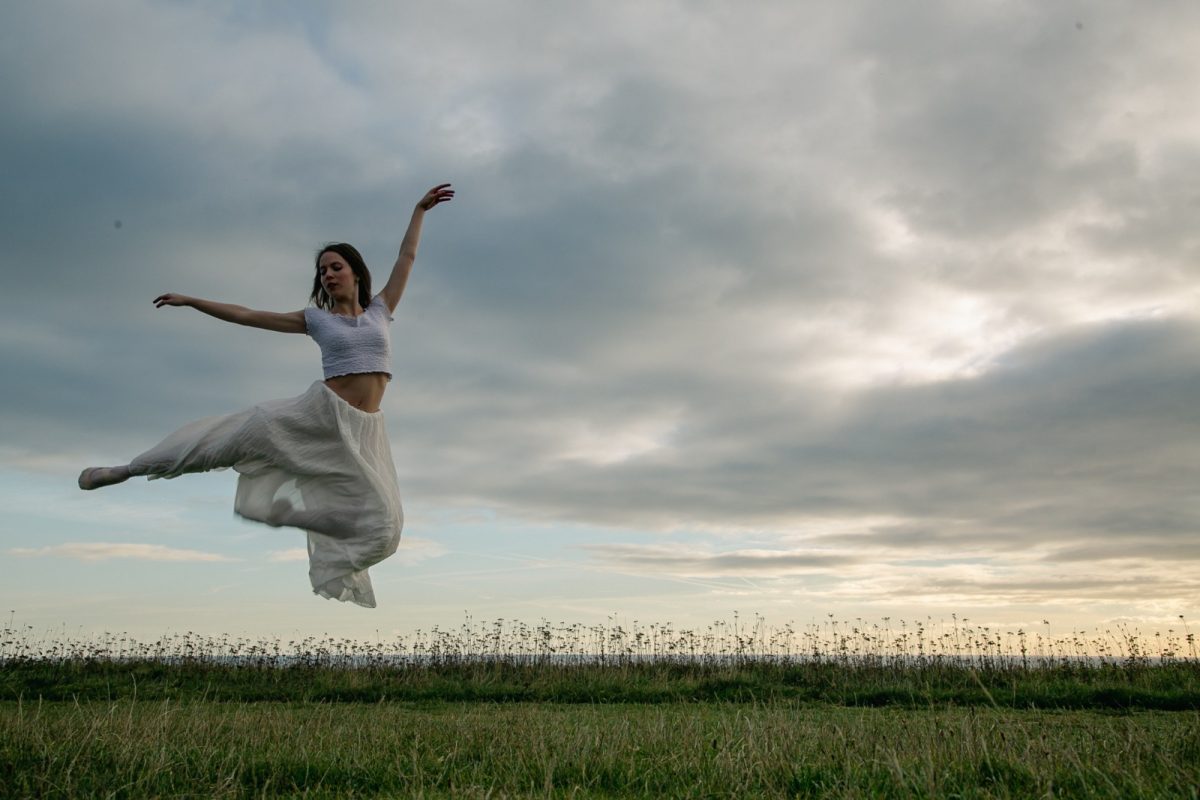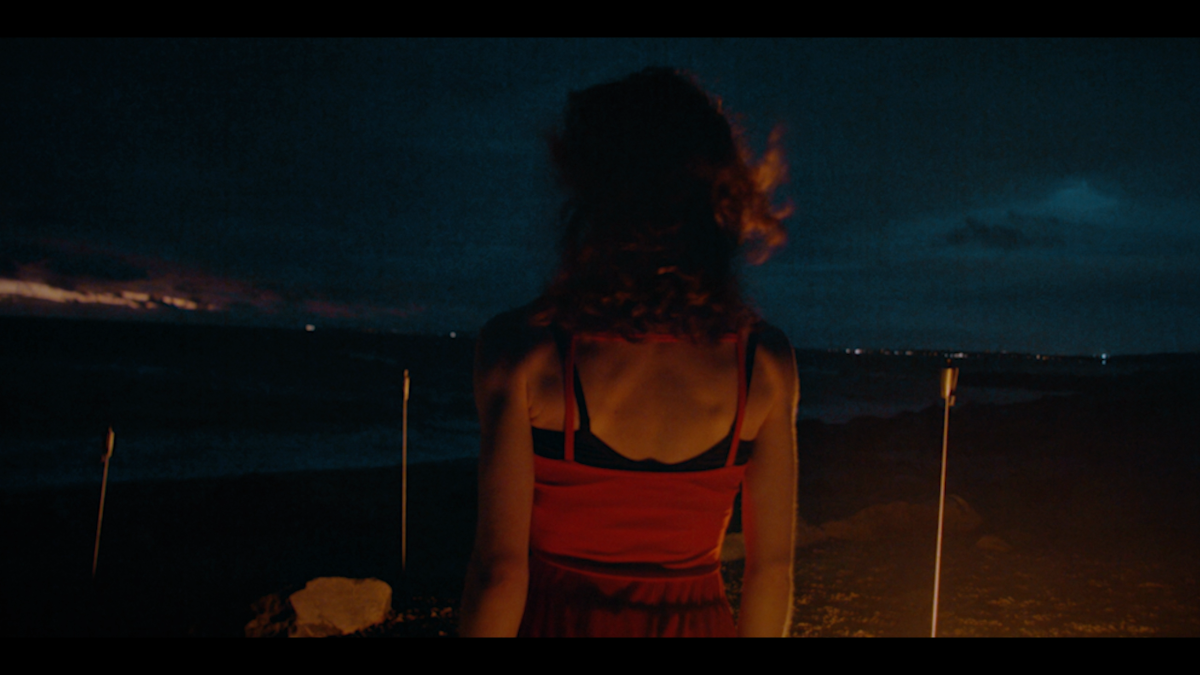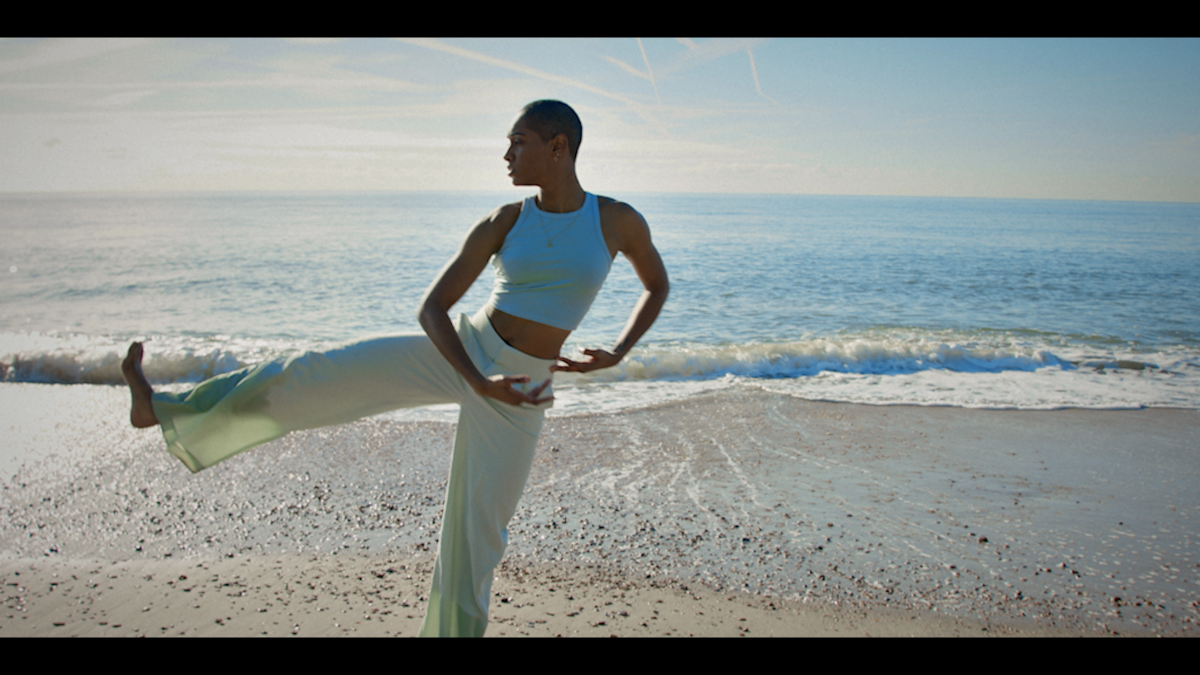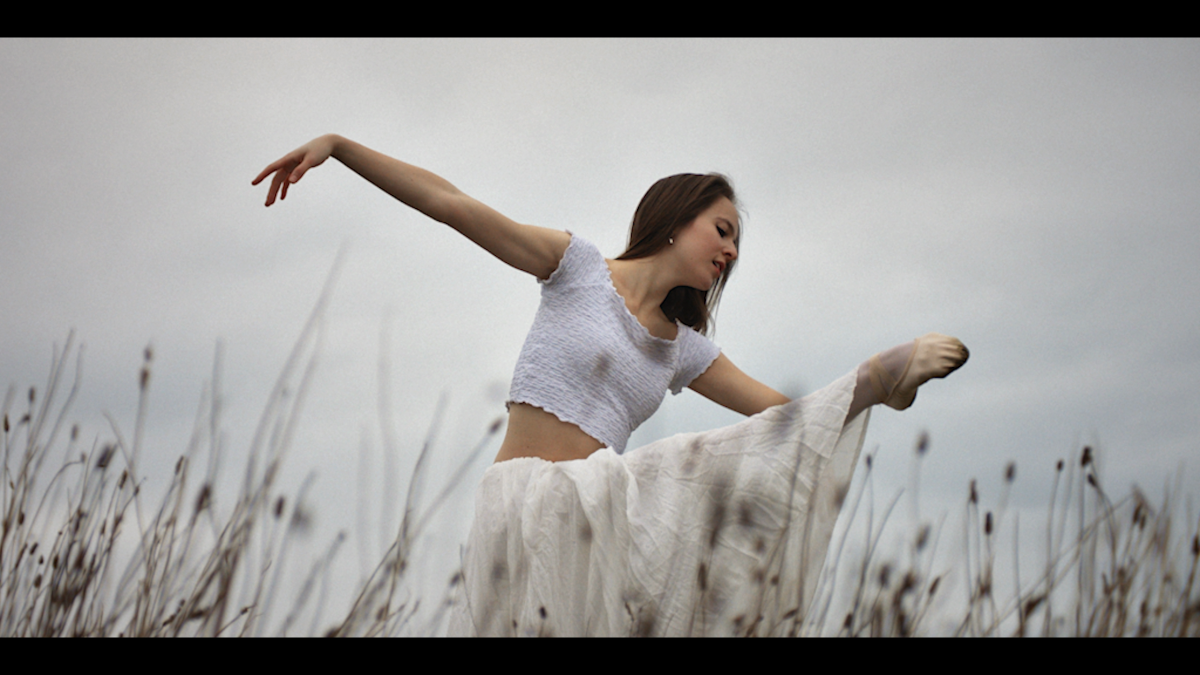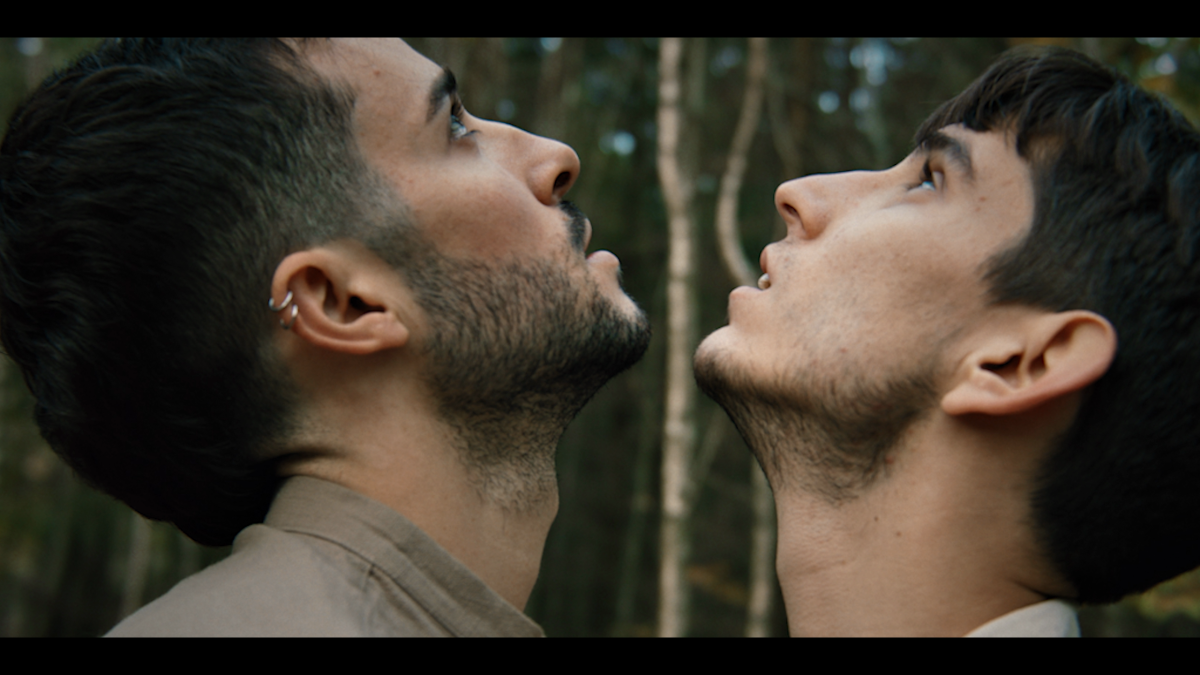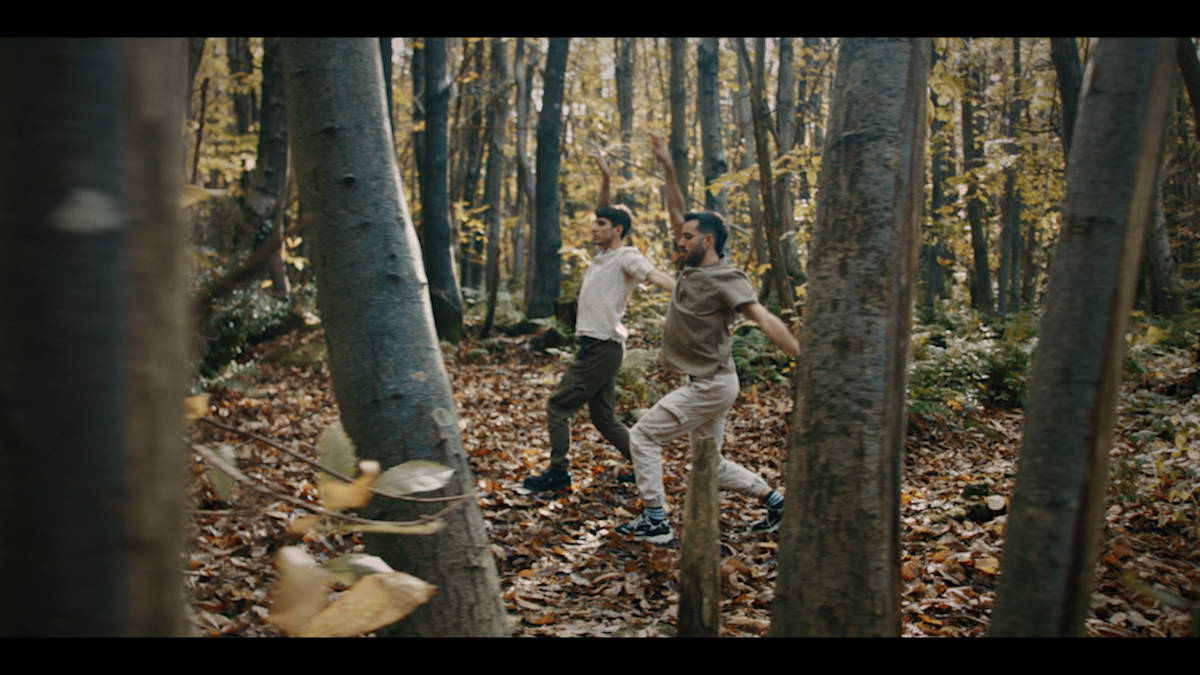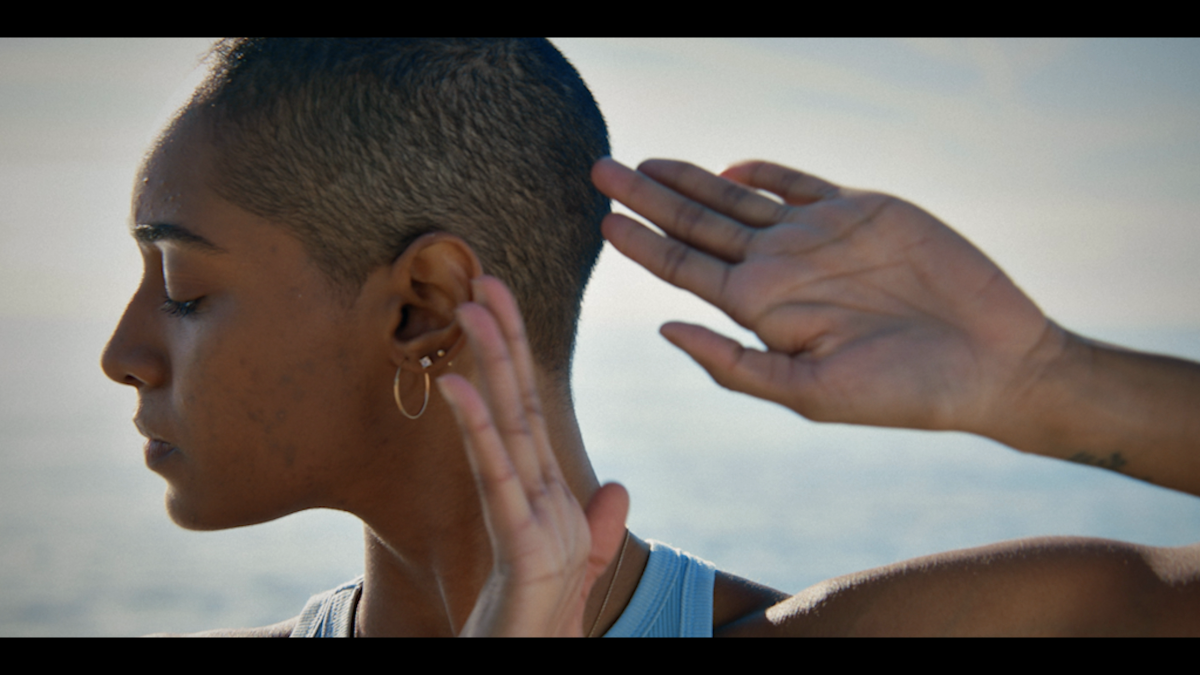Johanna Van Salmuth explores the effects of ongoing climate change in her award-winning short TO MY DYING MOTHER.
Film And TV Now spoke with the film-maker about the short.
This is very much a short that focuses on serious environmental issues through the medium of dance choreography. What was the start-off point for the short?
The start-off point for the short was to create something that involves all my passions, dance, activism, nature, film and music.
The inspiration to tell the story through the four elements came from a wonderful painting by Brian Kirhagis (https://treasongallery.com/brian-kirhagis-earth) and once my creativity started flowing it didn’t stop.
The spoken word element originated from the idea of combining a variety of different activism speeches together, however, I quickly got overwhelmed by the work that has to go into the copyright issues with such an undertaking, so I decided instead to bring in a poet to help deliver the message of the film.
You also choreograph the artists on show. What was your brief to the participants?
I put together a small piece of choreography which I filmed at home and sent to the dancers. Due to our busy schedules, we were unable to get together for a full rehearsal prior to the shoot.
On the day of shooting, we used the choreography I had created as a foundation on which each dancer interpreted their element and improvised following themes and guidelines I called out for each take.
For example on one take I told them to be calm, relaxed and slow in their movements, feeling the flow of nature as they moved, and then in another take, I gave them contrasting instructions to be more hectic, chaotic, confused and angry to portray the decay and destruction around them.
I must give a large amount of credit to my wonderful dancers and their brilliant interpretations of the themes I gave them and how they took my simple choreography and concept and made it their own in such a unique and amazing way.
Tell us about your production team.
Unfortunately for this film, I was the only one in the production team. Normally I love to have as many amazing production team members as possible working with me, but for this one, we had such a quick turnaround that I just did it on my own.
I did however have an amazing crew consisting of a DOP, Camera Assistant and stills photographer on location to capture all of the amazing dance performances, as well as a great editor, colour grader and composer that pieced it all together to bring my vision to the screen.
Where did you shoot and for how long?
We shot the first three elements in Barton on Sea over two days and shot the final element in a beautiful forest in Kent. The entire shoot took just three days.
Who and what are your key cinematic influences?
When discussing the project with my DOP, Alex Kingston, we mainly referenced dance videos and music videos that we have seen on YouTube.
As we have previously worked on multiple projects together before, we kind of have our own way of communicating and understanding one another so we sort of knew what style we wanted without having any specific influences in mind.
For us, it was important to have the camera dance with the dancers, which is why we chose to film using a Steadicam, a sort of vest that stabilises the camera and allows the camera operator to move freely. This meant that I could pretty much dance with Alex by the camera and push him in certain directions to capture each moment as they happened organically.
We were very spontaneous and open-minded while shooting which enabled us to have a play-around and opened the whole team up to pitch ideas.
Tell us about your cinematographer.
I can only speak highly of my amazing cinematographer, Alex Kingston. Not only is he an amazing DOP and Steadicam operator, but he is also a very good friend. He is always open-minded about ideas and brings his own wonderful creativity to the table which makes for a fun and creative environment to experiment in.
Alex is a unique human being and very close to my heart because he gives you 110%, knows his craft, never loses his positivity, and always has a smile on his face.
What issues and themes are you keen to explore in future work?
I have many issues and themes I would like to explore through the media of filmmaking, such as equality, feminism, modern slavery, racism and continuing environmental activism.
Do you see this project as part of a series of shorts that examine serious social issues?
I hadn’t considered that possibility, but I think it’s something that is worth exploring as a different way to approach social issues, rather than creating a feature-length documentary. Considering the way, a lot of people consume media today through social media platforms, in bite-sized snippets, it could absolutely be worth delving deeper into creating a series of shorts following this theme.
Tell us about the music and your collaboration with the composer.
The music for me was such a big and important part of the film and I began looking for a composer very early on in the process.
I got lots of recommendations from friends but because I had worked with Sam Storey on a musical earlier in the year, I just thought he would be the perfect composer for it. His passion for music and nature was the perfect combination for the music. I gave him a lot of freedom to explore the theme, which is something I like doing, giving all creative people who are involved space to experiment with their own ideas first.
We quickly came to the idea to include as many natural sounds as possible, wind, storms, water, leaves etc. It didn’t take us long to find the perfect starting point and then it was just fine-tuning the rest to make it all fit together.
Are there plans to show the film to environmentalists and governments to highlight the ongoing climate problems?
We would love to have the film shown as much as possible around the world to raise awareness, so we are always looking into bringing it further into the world. We are lucky to be part of the Inheritance Festival, an environmental festival shown on national TV in the UK. We also want to try and sell/offer it to an organisation that fights for the environment, such as Greenpeace.
Your short played at the London Independent Film Festival recently. What was the experience like?
Having our premiere and winning an award at the London Independent Film Festival is an honour and fills us with so much joy and excitement for the journey ahead. It also gave me hope because it took a while for the film to be picked up, but it was such an amazing and emotional moment when LIFF chose our film to be part of their program.
Finally, what are you most proud of about this short?
I am most proud to have created a powerful piece that people can reflect on and hopefully act upon.


